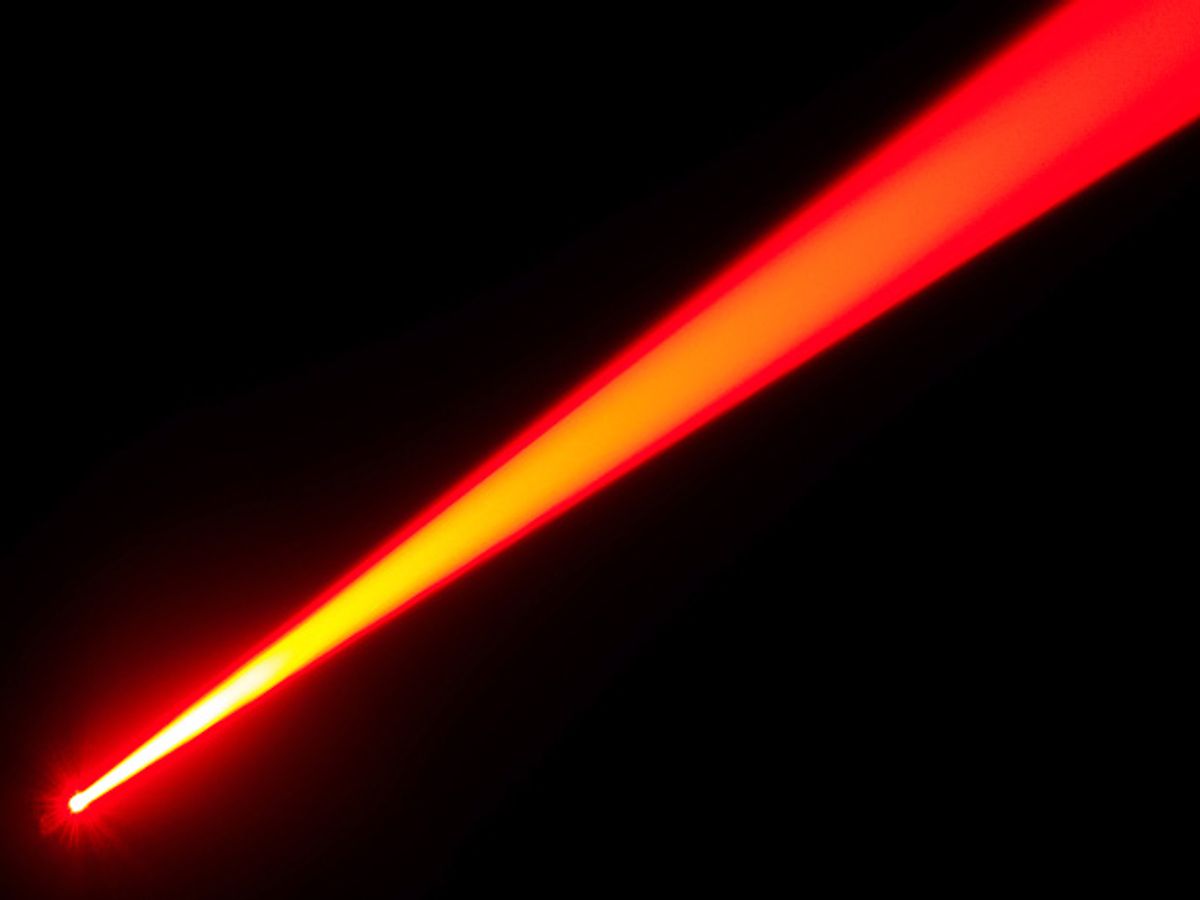A new laser could lead to fast and easy detection of explosives or toxins and may help NASA explore other planets.
The broadband quantum cascade laser can cover a vast swath of wavelengths in the infrared, making quick work of detecting chemical signatures. It’s also tiny and portable and works at room temperature, so it can replace bulky, complex lasers that are used for IR spectroscopy but that aren’t easy to carry out in the field.
“With one diode I can have access to any wavelength I want from 6 to 10 [micrometers],” says Manijeh Razeghi, director of the Center for Quantum Devices at Northwestern University. “We can have simultaneously different wavelengths to get fingerprints for different molecules.”
The laser consists of six separate stages, made with alternating layers of aluminum-indium-arsenide and gallium-indium-arsenide. The first stage produces higher-energy photons, with wavelengths in the 6-µm range. Those pass into the next stage, with some of them stimulating photons in the 7-µm range that have somewhat lower energy, and some of them passing through. The process continues through the stages to at the end the laser emits wavelengths from 5.9 to 10.9 µm. The trick, Razeghi says, lies in carefully designing the laser so that, though their wavelengths vary, all the photons emerge with the same power. She and her team describe the work in a recent paper in the journal Optics Express.
That region of the infrared spectrum is where many molecules have their natural resonant frequencies; it’s easy to identify a particular molecule by seeing what wavelength of light it interacts with. Razeghi says that because her laser produces spectrally narrow lines of laser light over such a wide range, it can pick out all sorts of substances that might be of interest. For instance, it might be used to test for small traces of explosives on cars as they drive by government buildings. The work was funded in part by the Department of Homeland Security and the Naval Air Systems command because of its potential security uses. NASA, which could use the system to identify, say, the constituents of Martian soil, also helped fund the research.
Neil Savage is a freelance science and technology writer based in Lowell, Mass., and a frequent contributor to IEEE Spectrum. His topics of interest include photonics, physics, computing, materials science, and semiconductors. His most recent article, “Tiny Satellites Could Distribute Quantum Keys,” describes an experiment in which cryptographic keys were distributed from satellites released from the International Space Station. He serves on the steering committee of New England Science Writers.



